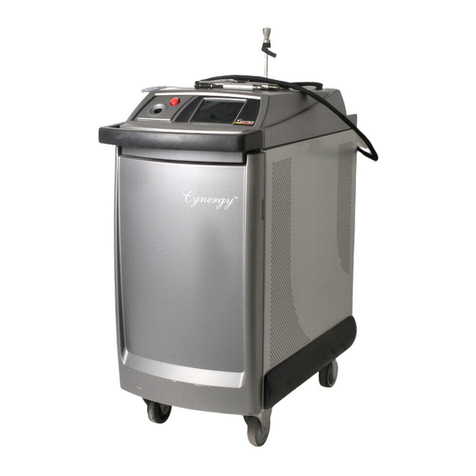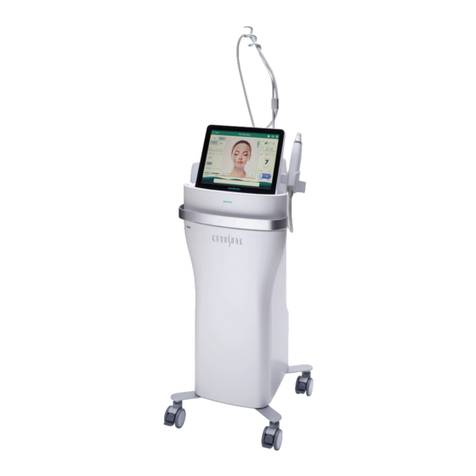
4 of 112 850-1265-000, Rev. 4 Cynosure, Inc.
Section 9 Servicing–Laser Heads and Beam Train ......................................................63
Dye Kit Methodology ...................................................................................................63
Dye Kit Assessment..........................................................................................63
Dye Kit Assessment Checklist..........................................................................64
Dye Injection.....................................................................................................64
Figure 24–‘Dye Injection’ Diagnostic Routine Flowchart ...............................65
Fiber Block Removal Procedure...................................................................................66
SMA/Focus Lens Removal...............................................................................66
Fiber Block Removal ........................................................................................66
Quantifying Laser Output, PDL....................................................................................66
Verify FOM, PDL.........................................................................................................67
Resonator Alignment Procedure, PDL .........................................................................68
Rough Resonator Alignment.............................................................................69
Resonator Optics Inspection/Replacement Procedure, PDL ........................................70
Pump Chamber Replacement Procedure ......................................................................70
Quantifying Laser Output, YAG...................................................................................71
Verify FOM, YAG........................................................................................................71
Resonator Alignment Procedure, YAG ........................................................................72
Resonator Optics Inspection/Replacement Procedure, YAG .......................................73
Flashlamp Inspection/Replacement Procedure .............................................................74
Figure 25–Flashlamps.......................................................................................74
Beam Combiner Inspection/Replacement Procedure ...................................................75
Fiber Alignment Procedure, PDL .................................................................................75
Turning Mirror Inspection/Replacement Procedure .....................................................75
Fiber Alignment Procedure, YAG ................................................................................76
Handpiece Inspection/Repair/Replacement..................................................................77
Fiber Inspection/Replacement Procedure .....................................................................78
Focus Lens Inspection/Replacement Procedure ...........................................................79
Calibration Procedures..................................................................................................79
Section 10 Servicing–Electrical Modules ........................................................................81
Replacing the Front Control Panel Module ..................................................................81
Calibrating the Touch Screen........................................................................................81
Replacing and Calibrating the ETX PCB .....................................................................81
Section 11 Servicing–HVPS Module................................................................................83
Replacing the High Voltage Power Supply Module.....................................................83
Calibrating the HVPS ...................................................................................................83
Section 12 Servicing–IGBT/Simmer Module..................................................................85
Replacing IGBT/Simmer Module Shelf .......................................................................85
Replacing Low Voltage Power Supply.........................................................................85
Replacing IGBT Triple Driver PCB, PDL....................................................................86






























